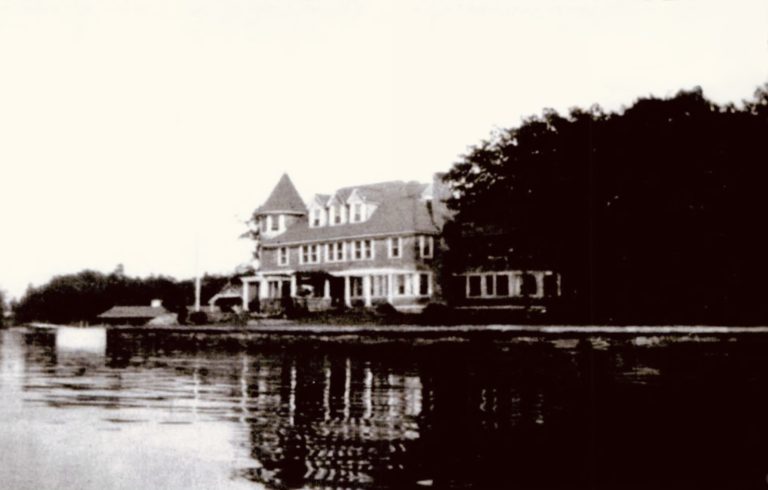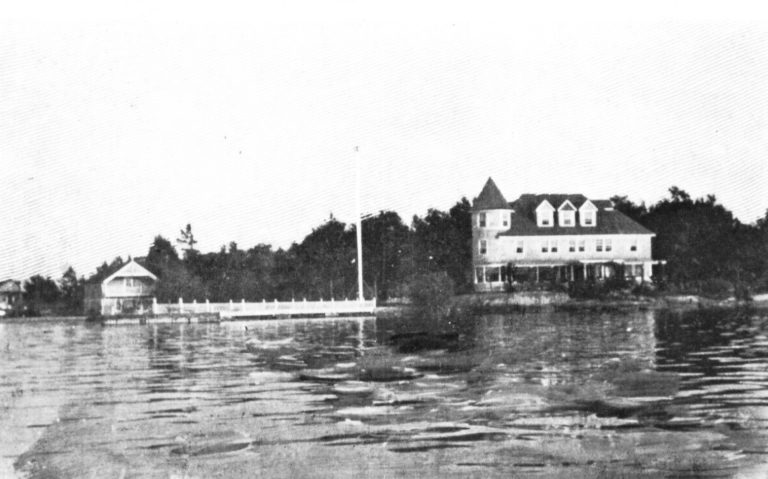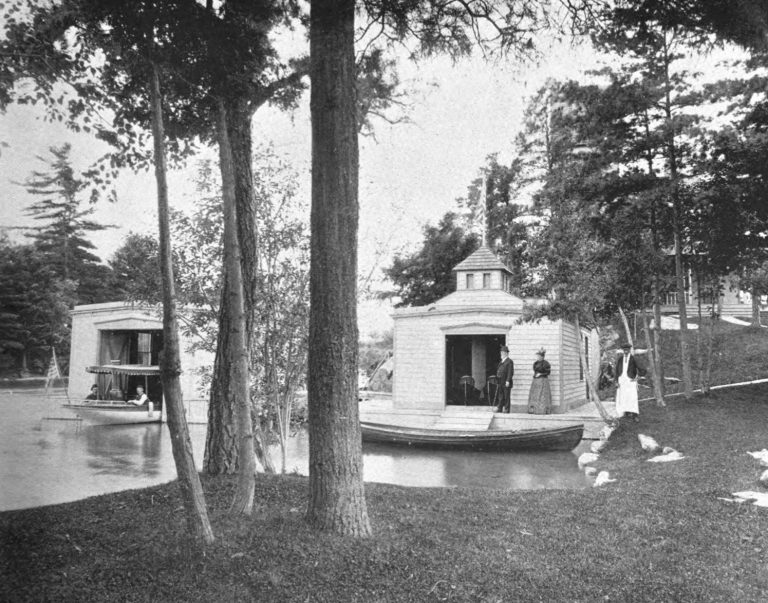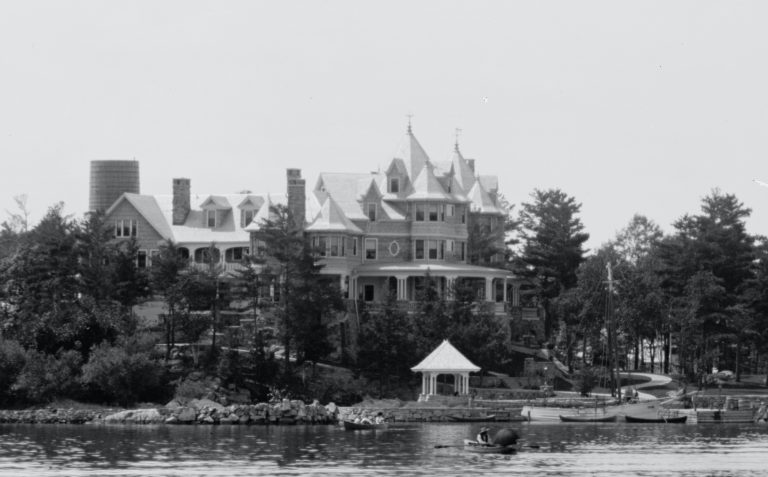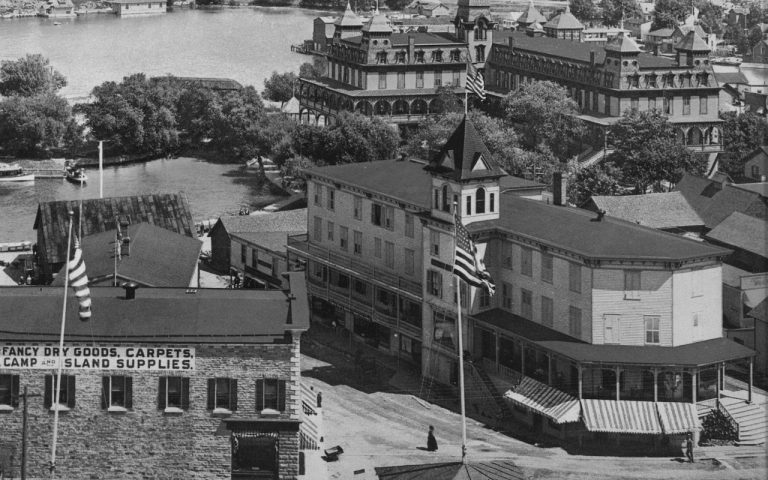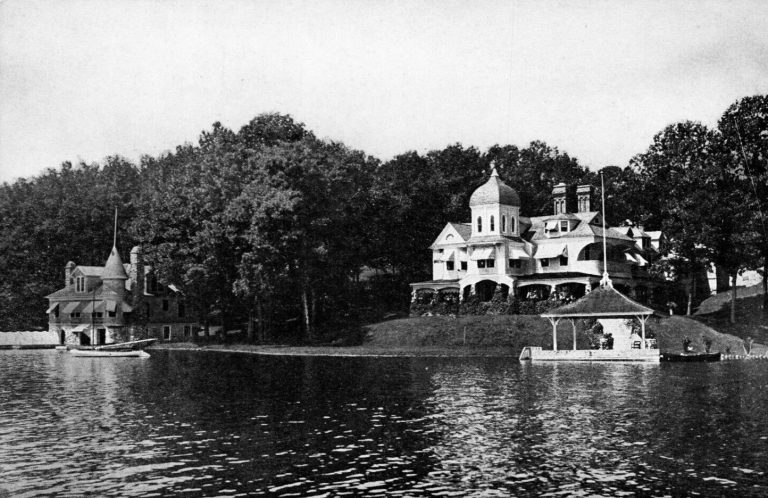New York Millionaire, Ship Builder & Commodore Charles Mortimer Englis Erects Palatial “Owatonna”
The island known as Owatonna, located in Chippewa Bay just off the much larger Oak Island and about a mile from Cedar Island, was purchased in 1896 by Commodore Charles Mortimer Englis, a shipbuilder from New York City and former Commodore of the Thousand Islands Yacht Club, amongst memberships of numerous other clubs in the Greater New York City area. The history of Owatonna, like many other islands outside the Alexandria Bay hub, is somewhat sparse, as are photos despite it still standing prominently on the river.

Born in Ravenswood, Long Island City, Queens, on December 14, 1856, the son of John and Jeannette Carrick Englis. After attending public schools, he graduated from Mount Washington Institute and enrolled at New York University. Later, he learned the trade of ship carpenter from 1875 until he became a member of his father’s shipbuilding firm in Brooklyn, its name now John Englis & Son., in 1882. In 1889, he ascended to president of the business, and its name changed to C. M. Englis, Inc.
According to the Ogdensburg Republican-Journal’s obituary upon his death, published January 18, 1926, Englis continued the family tradition that started with his grandfather–
With the traditions of his grandfather in mind, Charles M. Englis set to building what he considered to be the best steamships possible with the machinery of that day. From his Greenpoint yards the steamships Tremont, Vermont, Sagamore and Carmore slipped into the water.
These were followed by the famous Grand Republic and the Adirondack and the steamships Berkshire Fort Orange, Trojan and Rensselaer, now operating on the Hudson. Like his grandfather Mr. Englis did not build alone for local waters, and for the Atlantic runs he built the steamships Yale, Harvard and Governor Cobb. These were used during the World War for transport service in the English channel and were the first turbine steamships built in America.
It couldn’t be determined from old newspapers if Charles Mortimer Englis visited the 1000 Islands for any period of time before purchasing the Owatonna Island save his being elected as Commodore to the Chippewa Bay Yacht Club upon its formation in 1895, but it appears that the 16-room house was completed around 1897. J. H. Cullimore was then employed by Englis to oversee a number of extensive projects on Owatonna as well as two other islands Englis purchased, Unadilla and St. Peter’s, along with an interest in Oak Island.
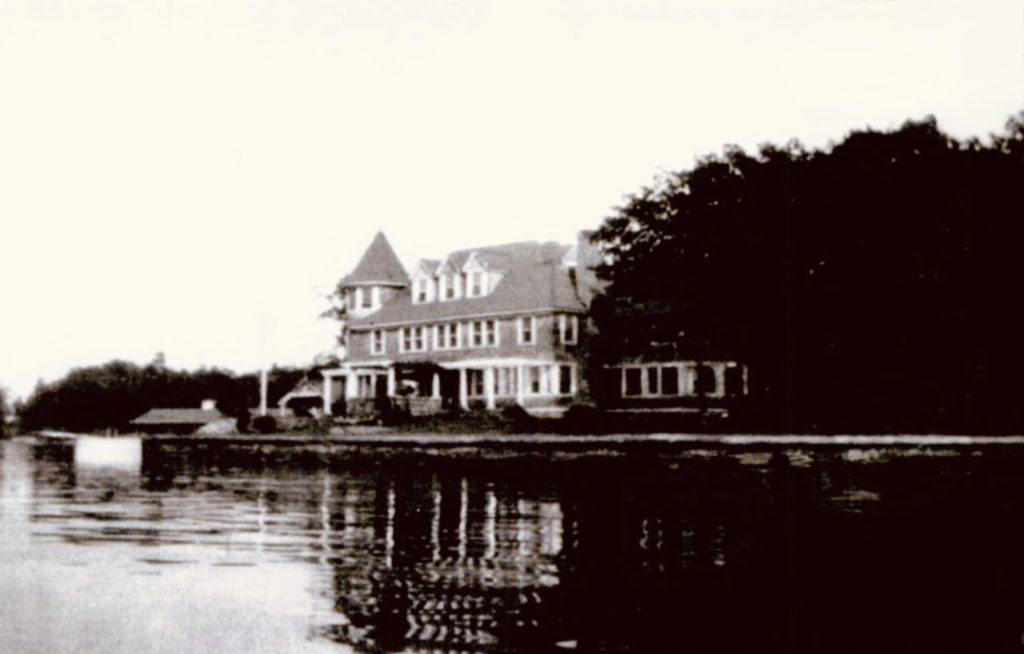
In the winter of 1901-02, Cullimore superintended the large addition to the dock on Owatonna, what was purportedly the largest private dock on the river measuring at 46 x 100 feet. Some of the work may have been done as Englis, being a Commodore and shipbuilder, used Owatonna as a check-in for participants of the races held at Chippewa Bay as part of its Yacht Club.
For over 20 years, Charles Mortimer Englis, his wife, Maude Louise (Pratt) Englis, and son, John Englis, made Owatonna their home, typically between late June, early July, into October. Upon his death at the age of 69 on January 15, 1926, the Republican-Journal added in his obituary–
He also was a life member and former Commodore of the Thousand Islands Yacht Club, where he had a summer residence for many years. His other clubs were the New York Yacht, The Bankers of New York, the Crescent Athletic, University of Brooklyn, the 7th Regiment and the 7th Regiment Veterans’ association, the ice Island Fishing, the Riding and Driving, Chippewa Bay Yacht, the St. Lawrence River and Thousand Island Country, the New York Republican, and member of the chamber of commerce of New York and Brooklyn.
He was an enthusiastic hunter and owned several islands near Chippewa Bay where he had established shooting points in the heart of the hunting district.
Mr. Englis was a close friend of the late George C. Boldt, J. N. Oliphant and other prominent residents here. Captain Robert Massey of this village (Alexandria Bay) is caretaker of the Englis home at Chippewa Bay.
Son John Englis used Owatonna for several summers afterward before Captain Robert Massey leased it out. In 1935, John Leroy Glover, his wife, and their son, John Leroy Glover, Jr., of Fairfield, Conn., were guests of Captain Massey and his wife and were seriously considering purchasing the island from the Englis estate. Glover’s wife, Mrs. J. L. Glover, was the daughter of Mrs. H. Ward Ford of Morristown, N. J., who had a summer residence on “Cedarmere Island” at Chippewa, according to the Ogdensburg Journal (I believe it may have been Cedar island.)
Below: a quick view of Owatonna from Jonathan Wood’s Vimeo channel, posted in 2016.
The couple purchased the island and made considerable renovations to it, however, at some point, between 1935 and 1949, it was owned by Emily Turrell of Lebanon, New Jersey, who put it up for sale in May of the later year. Owatonna Island was then described as having a picturesque bridge to Oak Island, a guest house with seven rooms, two baths, a hot air furnace, and two boathouses. The main property was listed as having fifteen rooms, three baths, a maid’s room and bath, a stone foundation, hot air heat, hot water, and a private electric plant.
A month and a half later, the property was purchased by Samuel Lacagnina of Rochester, N.Y., and Nell Cook, of Pittsburgh, Pa., with the intention of remodeling and renovating it, reopening it as a hotel for public use. Lacagnina used the guest house in 1950 as renovations were undertaken in the main house, which he opened the following year as the Chippewa Bay Lodge.
The lodge appeared to operate for a few seasons before no further information could be found on it or Owatonna Island, which often is the case post-1950s with many of the Thousand Island properties, though, as mentioned earlier, it still stands today. There were two Samuel Lacagninas of Rochester, one passing away in 1952, which may explain why no further information was found.
